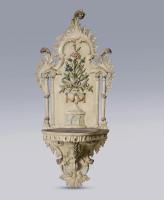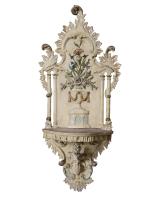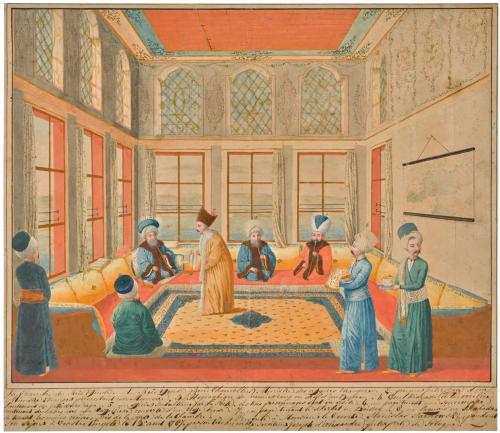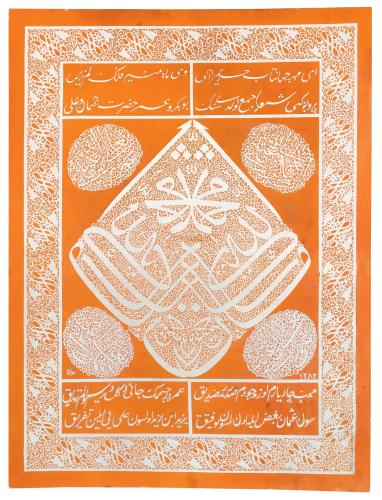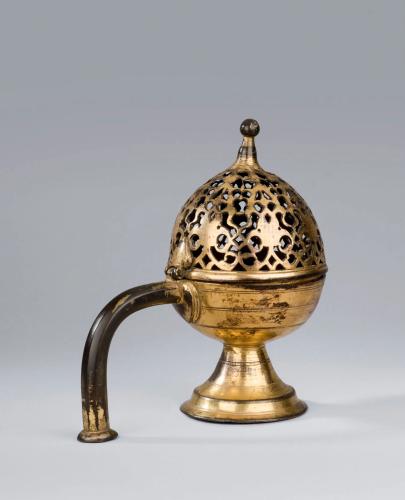
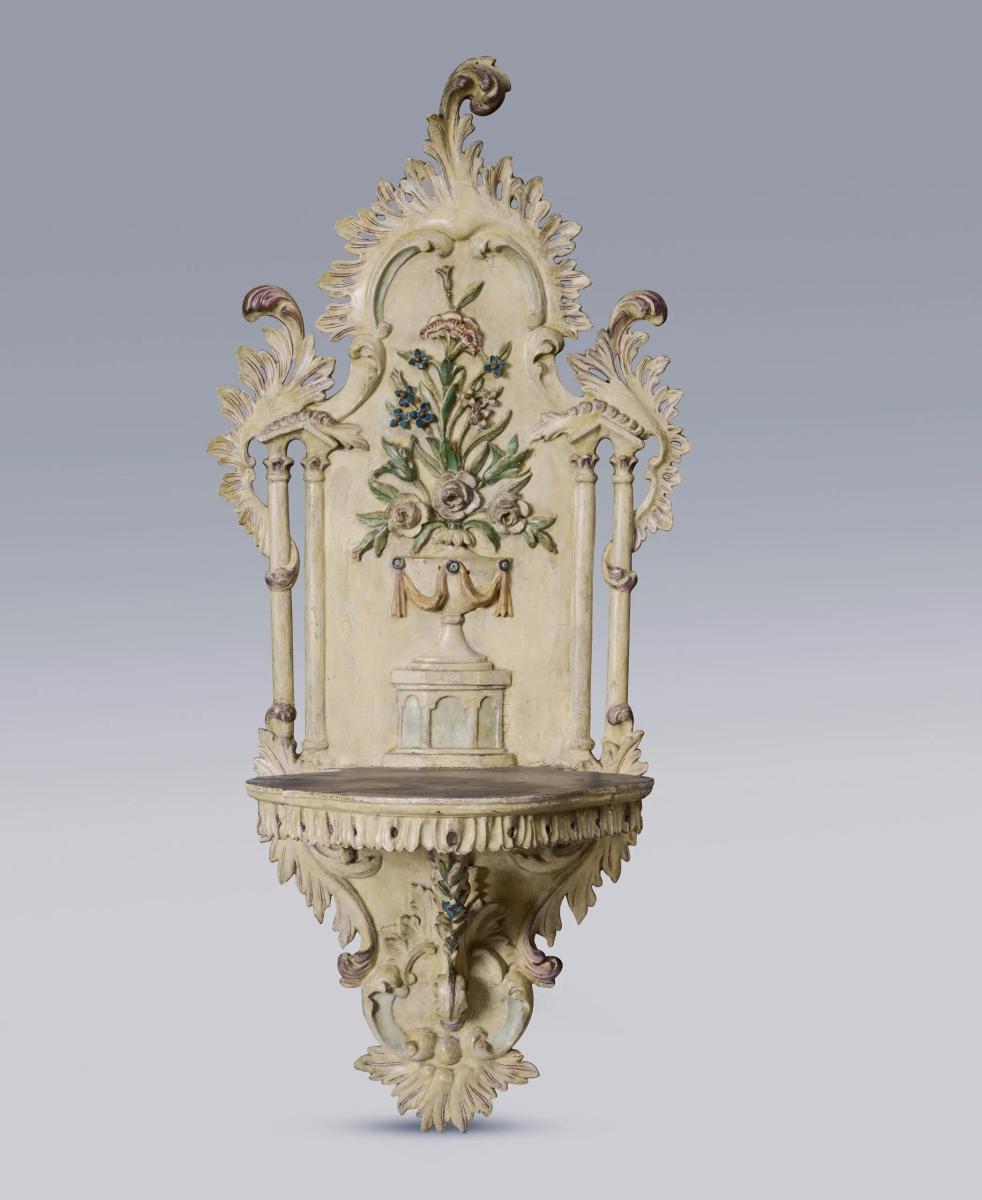
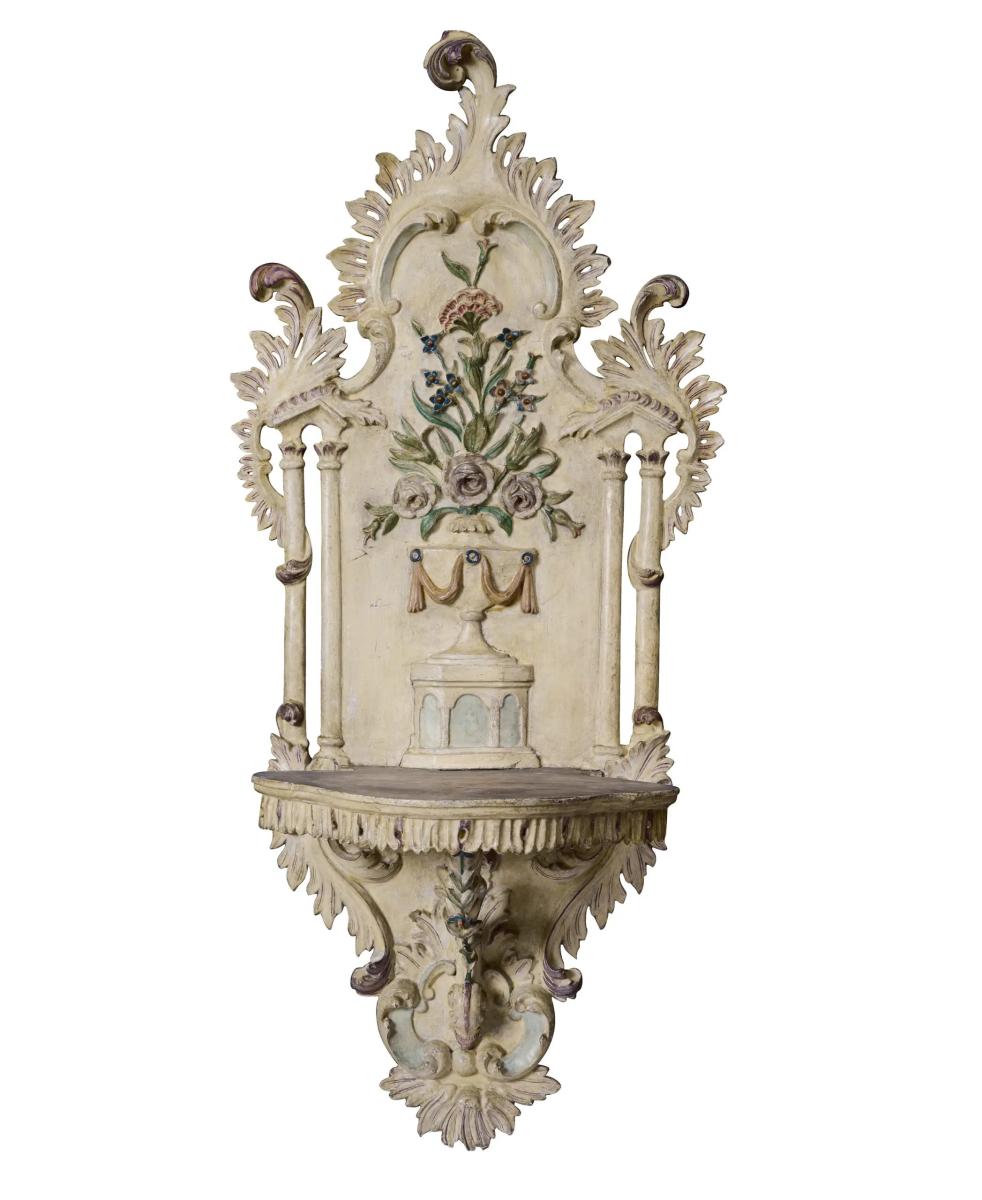
Price on application
This object is eligible for a Certificate of BADA Provenance
The BADA Standard
- Since 1918, BADA has been the leading association for the antiques and fine art trade
- Members are elected for their knowledge, integrity and quality of stock
- Our clients are protected by BADA’s code of conduct
- Our dealers’ membership is reviewed and renewed annually
- Bada.org is a non-profit site: clients deal directly with members and they pay no hidden fees
Pair of Ottoman Turban Stands Decorated with Spring Flowers in a Vase.
Ottoman Empire.
18th Century.
Heigth: 97 cm.
Carved wood, with flat back panel and bracketed shelf, decorated in carved deep relief and painted in polychrome and gilt, with a central bouquet in a vase flanked by columns and framed by acanthus swags and c-scrolls.
In the Ottoman period flowers, like those decorating the present turban stands, were a constant part of daily life, grown in gardens everywhere, from palaces to humble homes. Foreign travellers and ambassadors who visited the empire frequently remarked about this love of flowers. The 17th century Ottoman writer and traveller Evliya Çelebi describes how vases of roses, tulips, hyacinths, narcissi and lilies were placed between the rows of worshippers in the Eski Mosque and the Üç Şerefeli Mosque in Edirne, and how their scent filled the prayer halls. As depicted in the present tile, vases of flowers adorned niches in the walls, dining trays and rows of vases were placed around rooms and pools. For further information about ‘flowers in baskets or vases’ motifs please see, Motif from the Sadberk Hanım Museum Collection (written by Turgut Saner, Şebnem Eryavuz and Hülya Bilgi), Sadberk Hanım Museum, Istanbul, 2020, pp. 110-111.
The most beautiful and finely crafted examples of the so-called Edirnekâri turban stands were made in Istanbul, in the eighteenth century. Turbans expressed the prestige, reputation and eminence of those who wore them; hence, special turban stands were created so that they did not touch the ground. These stands were meant to be positioned with the turbans sitting at eye level. An Eighteenth-century turban stand similar to the present pair is in the Topkapi Palace Museum (Inv. No. 8/924).
Provenance
Ex-Private UK Collection.
The BADA Standard
- Since 1918, BADA has been the leading association for the antiques and fine art trade
- Members are elected for their knowledge, integrity and quality of stock
- Our clients are protected by BADA’s code of conduct
- Our dealers’ membership is reviewed and renewed annually
- Bada.org is a non-profit site: clients deal directly with members and they pay no hidden fees


